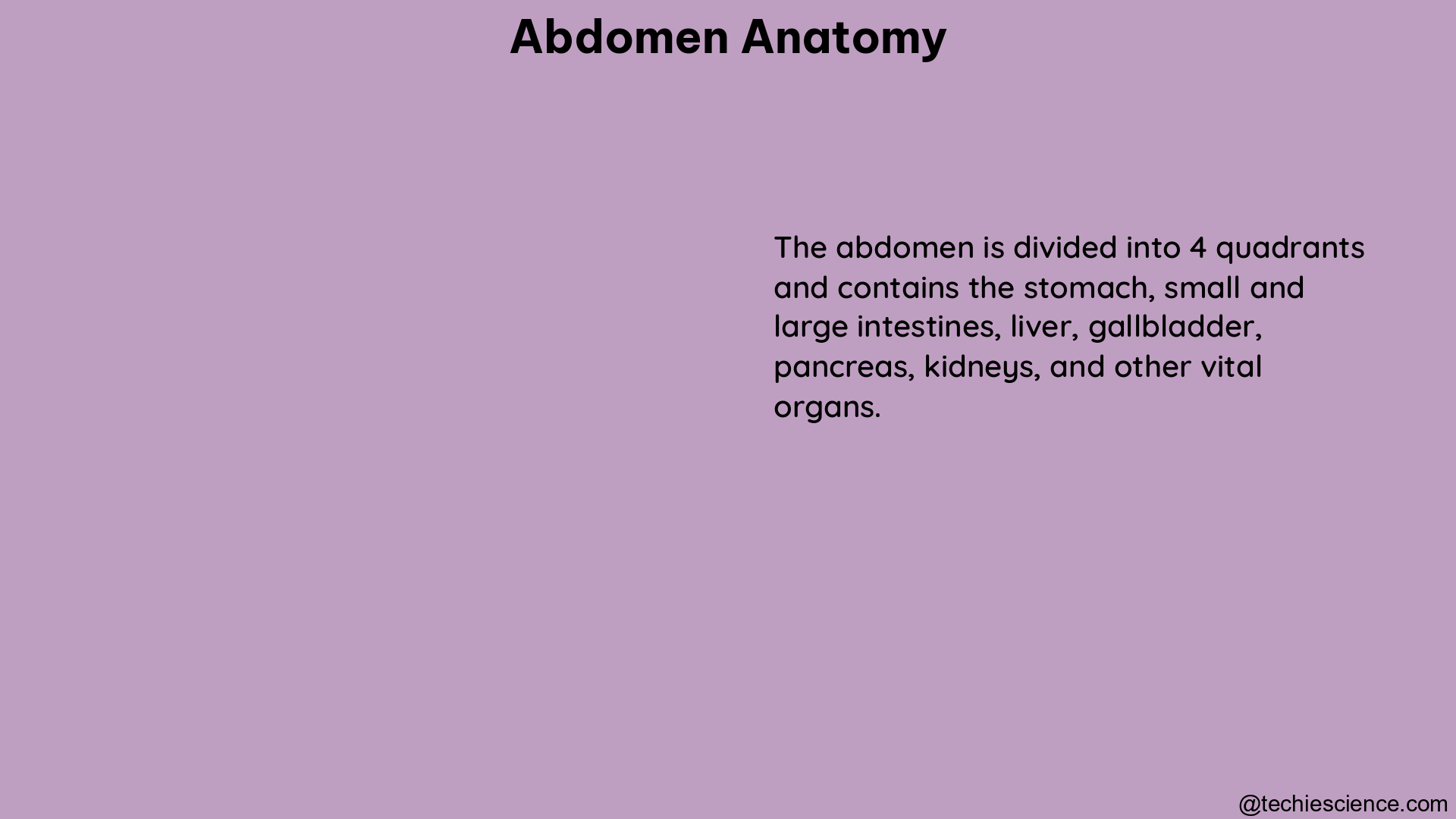The abdomen is a complex and multifaceted region of the human body, encompassing a diverse array of structures and functions. This comprehensive guide delves into the intricate details of abdomen anatomy, providing a wealth of biological and advanced information to enhance your understanding.
Defining the Abdominal Regions
The abdomen can be divided into four distinct areas, each with its own unique characteristics and contents:
- Intrathoracic Abdomen: This region lies beneath the rib cage and contains the diaphragm, liver, spleen, and stomach.
- Pelvic Abdomen: Defined by the bony pelvis, this area houses the urinary bladder, urethra, rectum, small intestine, and in females, the ovaries, fallopian tubes, and uterus.
- Retroperitoneal Abdomen: This region encompasses the kidneys, ureters, pancreas, aorta, and vena cava.
- True Abdomen: The true abdomen contains the small and large intestines, the uterus (if gravid), and the bladder (when distended).
Quantifiable Data on Abdomen Anatomy

Researchers have gathered valuable data on the composition and proportions of the abdomen, providing insights into the differences between sexes and age groups.
Intraabdominal Adipose Tissue
- Men have a significantly greater percentage of intraabdominal adipose tissue compared to women.
- The percentage of intraabdominal adipose tissue increases with age in both sexes.
Abdominal Tissue Composition
- The percentage of total abdominal area that is adipose tissue is significantly negatively correlated with the percentage of muscle and bone in both sexes.
Waist-to-Hip Ratio
- In women, the ratio of total areas of abdominal slices to total areas of pelvic slices (analogous to waist-to-hip ratio) has significant positive correlations with the absolute and relative areas of intraabdominal and subcutaneous adipose tissue.
- This ratio has significant negative correlations with absolute and relative areas of muscle and bone in women.
Biological Specifications of the Abdominal Wall
The abdominal wall is a complex structure that serves to contain and protect the abdominal cavity and viscera. It is composed of the following components:
- Skin: The outermost layer of the abdominal wall.
- Fascia: The connective tissue layer that provides support and structure.
- Muscle: The muscular layer that allows for distension, the generation of intraabdominal pressure, and movement of the vertebral column.
The abdominal wall’s ability to distend and generate intraabdominal pressure is crucial for various physiological functions, such as respiration, defecation, and childbirth. Detailed knowledge of the abdominal wall’s components is essential for surgeons, as abdominal wall defects can significantly impact a patient’s quality of life.
Theorems and Examples in Abdomen Anatomy
The division of the abdomen into four distinct areas, as described earlier, can be considered a fundamental theorem in abdomen anatomy. This theorem is exemplified by the intrathoracic abdomen, which contains the diaphragm, liver, spleen, and stomach, and is located beneath the rib cage.
Another theorem in abdomen anatomy is the composition of the retroperitoneal abdomen, which includes the kidneys, ureters, pancreas, aorta, and vena cava. An example of this is the case of a patient with a retroperitoneal hematoma, a condition that can be challenging to diagnose based on physical examination alone and may require advanced imaging techniques, such as computed tomography (CT) scanning, angiography, and intravenous pyelography (IVP), for proper evaluation.
Conclusion
The abdomen is a complex and multifaceted region of the human body, with a wealth of biological and anatomical details to explore. This comprehensive guide has delved into the four distinct areas of the abdomen, the quantifiable data on its composition, the biological specifications of the abdominal wall, and the theorems and examples that underpin our understanding of this intricate region. By understanding the intricate details of abdomen anatomy, healthcare professionals and students can enhance their knowledge and provide better care for their patients.
References:
- Tsai HC, Yoshida T, Chuang TY, Yang SF, Chang CC, Yao HY, Tai YT, Lin JA, Chen KY. Transversus Abdominis Plane Block: An Updated Review of Anatomy and Techniques. Biomed Res Int. 2017;2017:8284363.
- Blunt Abdominal Trauma – Medscape Reference. 2022-03-30.
- The Dresden Surgical Anatomy Dataset for Abdominal Organ Segmentation in Laparoscopic Images. 2023-01-12.
- Abdominal Assessment19/08/19. Course Hero.
- Abdominal composition quantified by computed tomography – PubMed. 1983-01-01.

The lambdageeks.com Core SME Team is a group of experienced subject matter experts from diverse scientific and technical fields including Physics, Chemistry, Technology,Electronics & Electrical Engineering, Automotive, Mechanical Engineering. Our team collaborates to create high-quality, well-researched articles on a wide range of science and technology topics for the lambdageeks.com website.
All Our Senior SME are having more than 7 Years of experience in the respective fields . They are either Working Industry Professionals or assocaited With different Universities. Refer Our Authors Page to get to know About our Core SMEs.